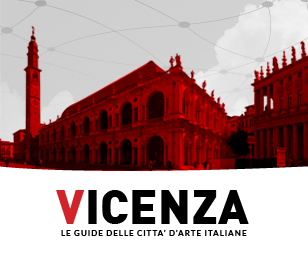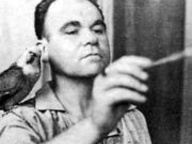Vittore Carpaccio
Venezia 1465 ca - Capodistria 1526 ca

Nato e vissuto nei territori della Repubblica di Venezia, è qui che svolge la propria attività. Non abbiamo notizie certe sulla sua formazione, ma già dai primi lavori mostra una cultura ampia, influenzata non solo dall'umanesimo veneto, ma anche da modelli ferraresi, umbro-toscani e fiamminghi.
Il suo nome e la sua fortuna pubblica sono legati ai cicli di teleri (composizioni pittoriche di grandi dimensioni su tela, che furono le decorazioni murali più diffuse nella Venezia dei secoli XV e XVI) che realizzò per le Scuole veneziane di Sant'Orsola (1490-95), di San Giorgio degli Schiavoni (1502-07), degli Albanesi (1504-08) e di Santo Stefano (1511-14).
Per i cicli di Sant'Orsola (oggi nelle Gallerie dell'Accademia, Venezia) e di San Giorgio (una delle cui tele più celebri è San Giorgio e il Drago), l'intreccio viene svolto con un'incredibile varietà di soluzioni narrative e con una forte sensibilità per il colore e gli accordi cromatici. Meno fortunato il ciclo per la Scuola gli Albanesi. Alcuni episodi del ciclo di Santo Stefano invece si iscrivono tra le opere più alte dell'autore.
Nel 1507 avvia una collaborazione con Giovanni Bellini (nel 1496 aveva invece lavorato con Gentile Bellini al ciclo per la Scuola di San Giovanni Evangelista) a un ciclo di dipinti storici per la Sala del Maggior Consiglio di Palazzo Ducale, ma andò tutto distrutto nell'incendio del 1577.
L'ultima fase della sua produzione è segnata da un rapido declino, forse dovuto al profondo rinnovamento che la pittura e la cultura veneziane stavano vivendo. Tra le altre opere da ricordare: Ritratto di Cavaliere (Collezione Thyssen-Bornemisza, Madrid), Due Dame (Museo Correr, Venezia), Presentazione di Gesù al Tempio (Gallerie dell'Accademia, Venezia).
Le opere
-
Miracolo della reliquia della Croce al ponte di Rialto
Gallerie dell’Accademia -
Museo Correr
-
Gallerie dell’Accademia
-
Chiesa di San Giorgio Maggiore
-
Chiesa di San Salvador










